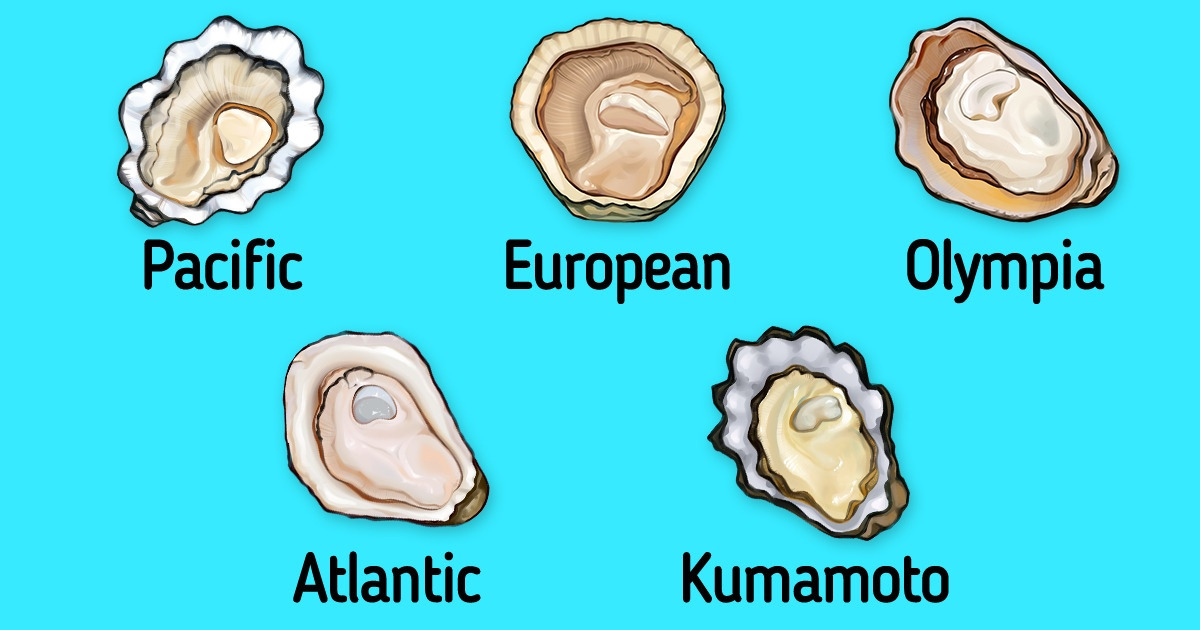
Different Kinds of Oysters, and What You Should Know About Them

5-Minute Crafts has prepared a guide to help you find out more about the most popular kinds of oysters and not get confused at a place that serves them.
History
Useful properties
Fresh oysters are rich in zinc: 6 average-sized oysters provide 220% of the daily norm. They also contain a lot of vitamins and other substances, such as B12, C, D, E, magnesium, selenium, iron, and others, plus aminoacids. Oysters don’t contain a lot of fat or calories.
How to tell a fresh oyster from a bad one
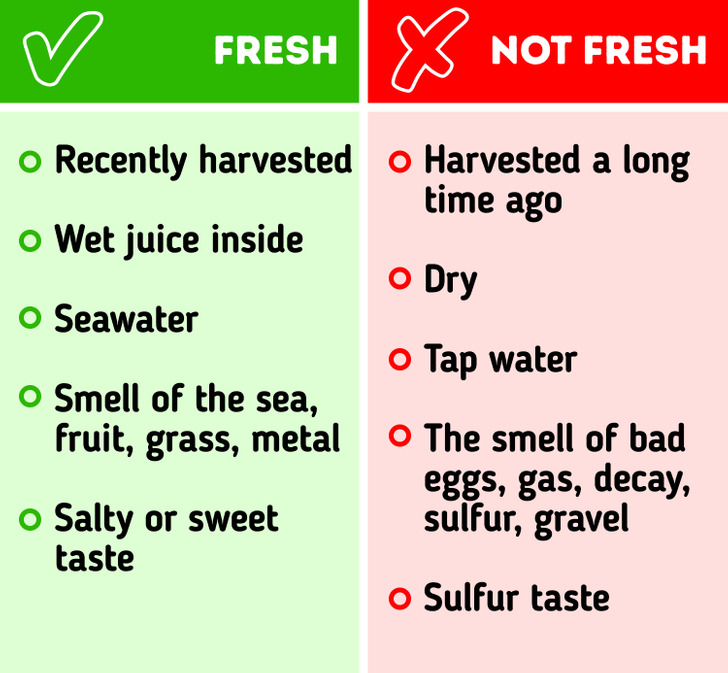
Freshness is the most important indicator of oyster quality because it really affects the taste.
You can tell a fresh oyster from a not-so-fresh one this way:
- If possible, find out when the oysters were harvested.
- Fresh oysters need to be soaked in seawater and have some kind of juice inside; and if an oyster is dry, you can throw it away.
- Contact with tap water is impossible because it ruins oysters.
- A perfectly fresh oyster has to be alive until it’s eaten.
- If you can sense the smell of bad eggs, gas, or sulfur, throw the oyster away, you can’t eat it.
- Even when an oyster looks good, it might taste awful: not being salty enough or tasting like sulfur can be signs that the oyster is bad.
What to do at a place that serves oysters
Experts recommend ordering no more than 4-6 different kinds of oysters. 2 items of each kind will allow you to try all the nuances in taste and not get confused.
Here are a few simple steps to help you enjoy this delicacy when it has already been served:
- Look at the appearance — there should not be any shell pieces inside or sand, and the meat should be intact, juicy, shiny, and fresh.
- Enjoy the sweet smell of the sea breeze, there should not be any fish smell.
- Try the oyster juice.
- Put the flat edge of the shell to your lips and drink the whole oyster.
- Chew the meat to sense the transition from salty taste to sweet.
- Turn the shell to enjoy the look of it.
Kinds of oysters
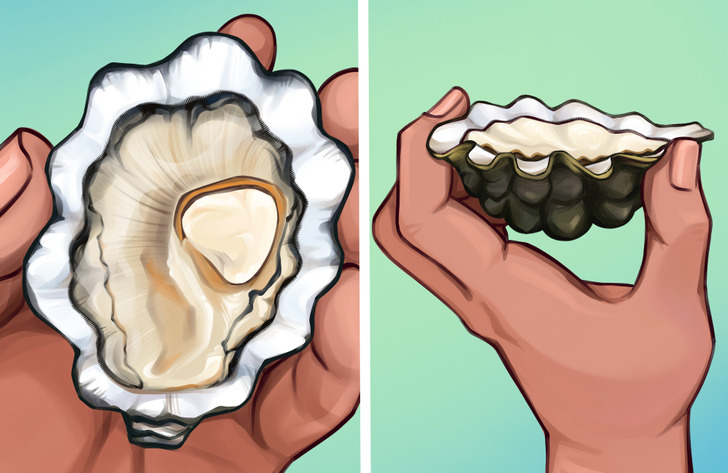
Pacific oysters (Crassostrea gigas) are the most popular kind in the world. They have a small size and a soft sweet taste with herbal, fruit, and vegetable notes. The shell is more fluted, and it’s deep and clean white inside. The shell is cream color in the middle with small “hairs.” The ideal half-shell size is 2 to 4.5 inches with a 2:3 width/length ratio.
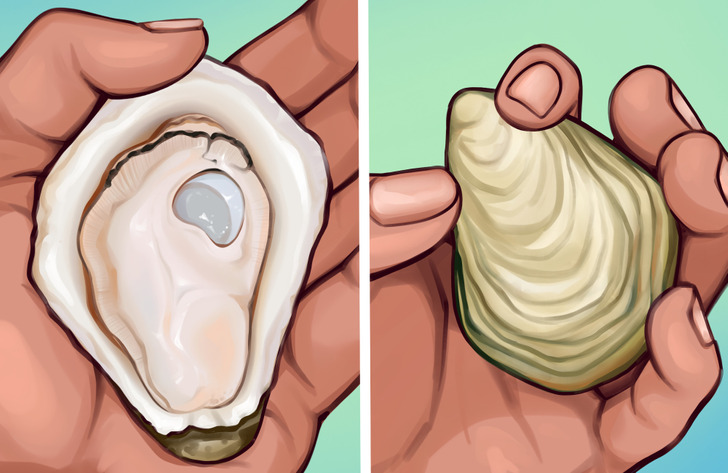
Atlantic oysters (Crassostrea virginica, Bluepoints, Wellfleets, Malpeques, Beausoleils) have been around 78% of all the harvested wild oysters since 1990. Their shell is smoother and it looks like a drop. It’s recommended to choose deep ones with a non-transparent oyster inside, a prominent adductor muscle. The optimal half-shell size is between 2 to 4 inches in length with a 2:3 to 3:4 width/length ratio. The taste can be earthy or like a mushroom, but it mostly depends on the water temperature and the area where it grew.
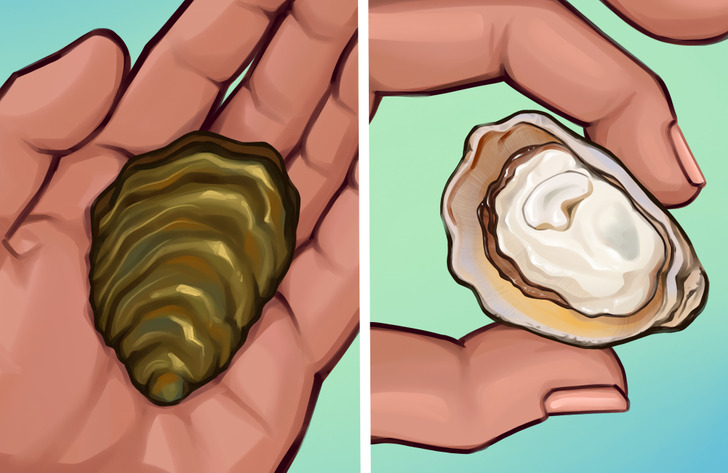
Olympia oysters (Ostrea lurida, Ostrea conchaphila) were decimated at the beginning of the twentieth century due to environmental pollution and extreme harvesting. For decades, they were believed to be extinct. But today, wild populations exist and are protected. For food purposes, they are specially grown. Olympia oysters are not very big, they look like a guitar pluck. On the inside, the shell is light, from a creamy to olive color, and with a lustrous or pearlescent glaze. The meat is usually non-transparent, white, or creamy. The oysters have a rich smell with metal, copper, earthy, and spicy notes. The size should be about 2 inches long, flat.
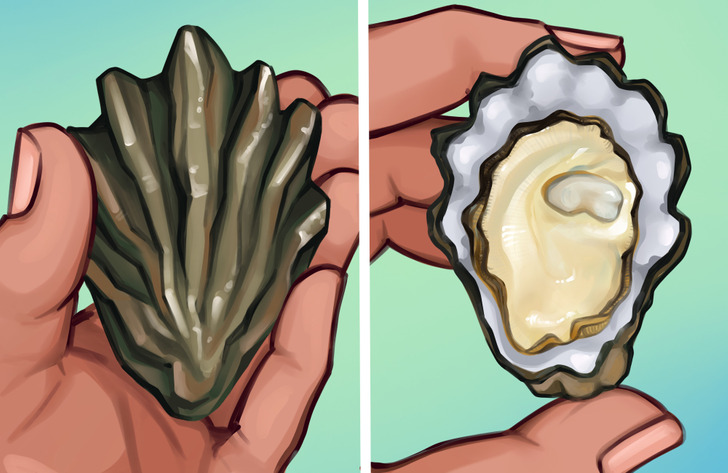
Kumamoto (Crassostrea sikamea) used to be believed to be the same as Pacific, but they are a separate kind. They have deep shells with sharp edges. The bottom shell has distinctive cat paw fluting. The oysters have a small lump of sweet, cucumber, and melon rind meat. They are low in salinity and are usually described as sweet with fruit or grassy vegetal flavors. The size should be no bigger than 2 inches long.
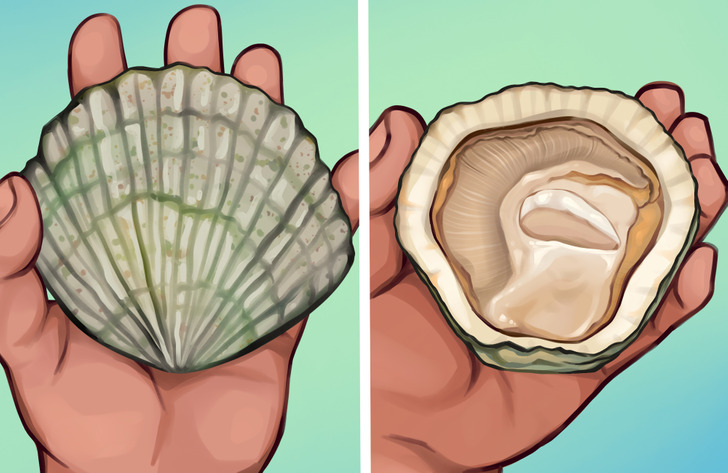
European oysters (Ostrea edulis, Flat, Belon) were brought from the Netherlands into America in the 1950s. The thick shells are round, flat on the top, and curved at the bottom. On the outer side, there should be circles of growth. Non-transparent meat is preferable. This kind of oyster is meaty, crunchy, sweet, and creamy with notes of seaweed and an umami taste. The optimal half-shell size is 3 to 4 inches because big ones are usually dry and small ones are underdeveloped.
Some facts about oysters
- Edible oysters don’t contain pearls because they are a different species. But there are exceptions in nature, as always.
- It’s been proven that oysters are aphrodisiacs, like many other foods.
- Oysters eat phytoplankton or small bits of algae. They obtain their food by filtering water in and over their gills.
- Oyster shells can be recycled and repurposed for a number of things. They can be used as feed boosters, fertilizer, and decoration.
- If an oyster is green, it’s normal and safe. The color comes from Haslea ostrearia, a type of microalgae that oysters eat.